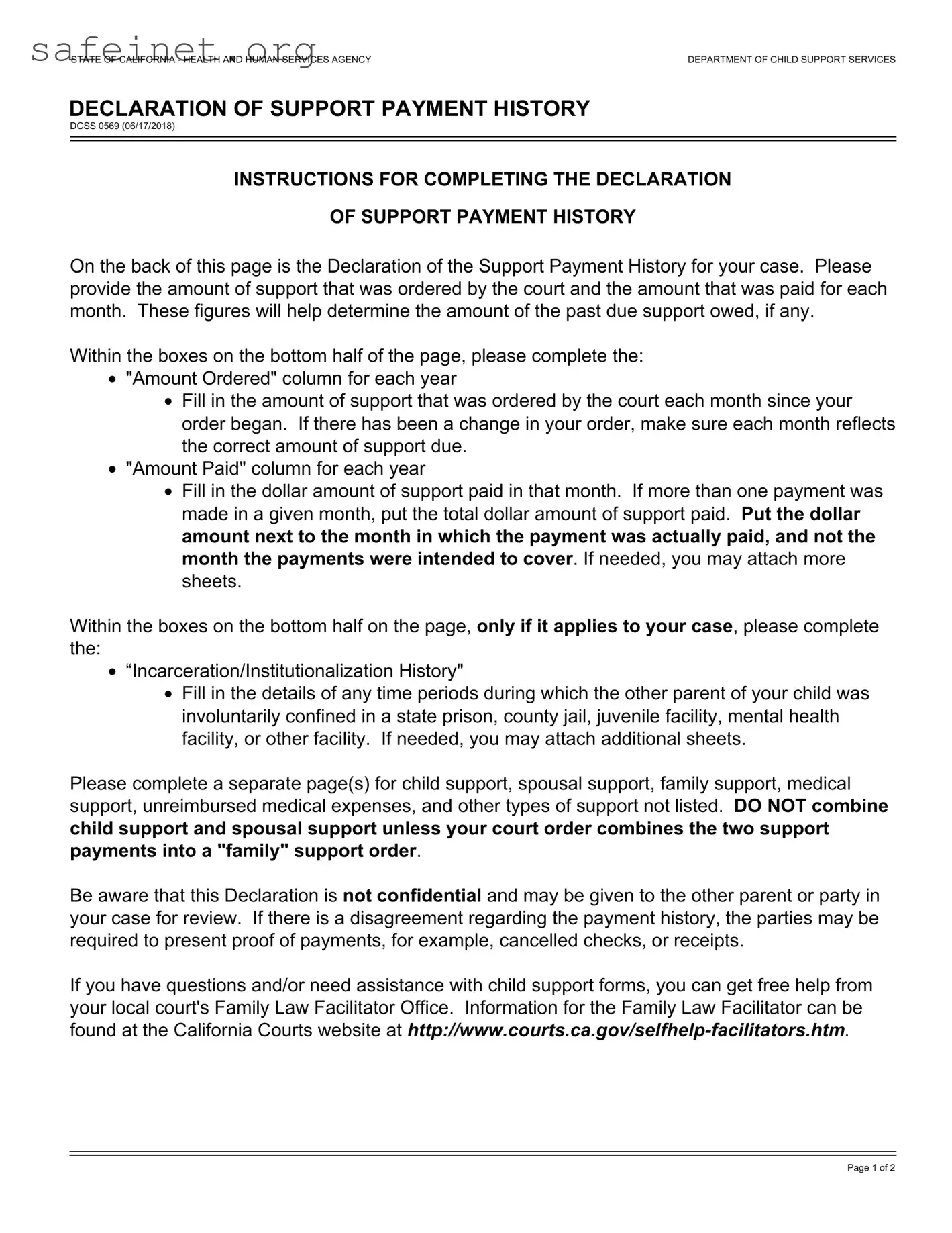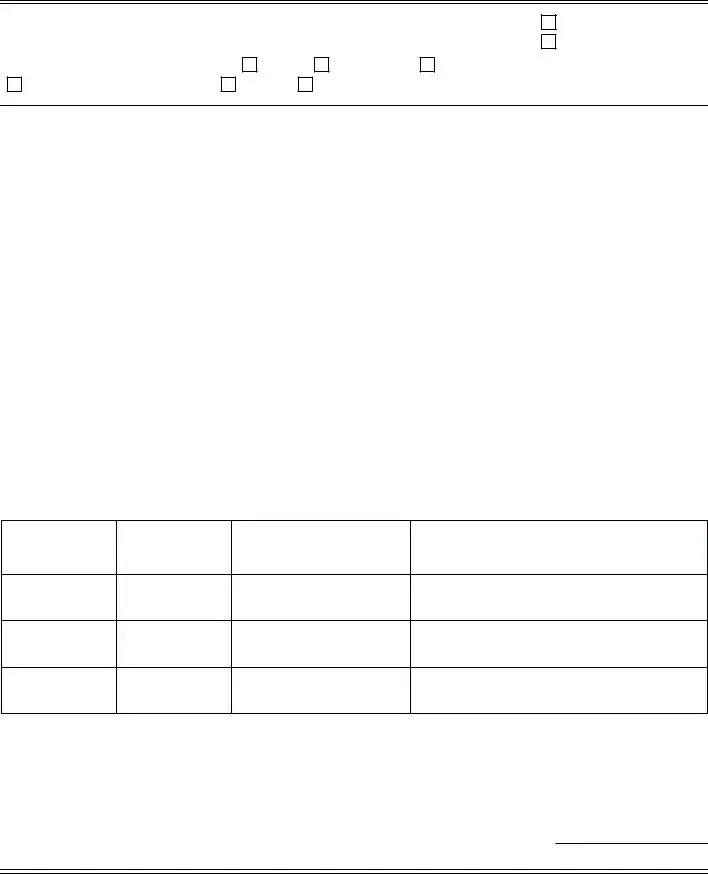STATE OF CALIFORNIA - HEALTH AND HUMAN SERVICES AGENCY |
DEPARTMENT OF CHILD SUPPORT SERVICES |
DECLARATION OF SUPPORT PAYMENT HISTORY
DCSS 0569 (06/17/2018)
INSTRUCTIONS FOR COMPLETING THE DECLARATION
OF SUPPORT PAYMENT HISTORY
On the back of this page is the Declaration of the Support Payment History for your case. Please provide the amount of support that was ordered by the court and the amount that was paid for each month. These figures will help determine the amount of the past due support owed, if any.
Within the boxes on the bottom half of the page, please complete the:
•"Amount Ordered" column for each year
•Fill in the amount of support that was ordered by the court each month since your order began. If there has been a change in your order, make sure each month reflects the correct amount of support due.
•"Amount Paid" column for each year
•Fill in the dollar amount of support paid in that month. If more than one payment was made in a given month, put the total dollar amount of support paid. Put the dollar amount next to the month in which the payment was actually paid, and not the month the payments were intended to cover. If needed, you may attach more sheets.
Within the boxes on the bottom half on the page, only if it applies to your case, please complete the:
•“Incarceration/Institutionalization History"
•Fill in the details of any time periods during which the other parent of your child was involuntarily confined in a state prison, county jail, juvenile facility, mental health facility, or other facility. If needed, you may attach additional sheets.
Please complete a separate page(s) for child support, spousal support, family support, medical support, unreimbursed medical expenses, and other types of support not listed. DO NOT combine child support and spousal support unless your court order combines the two support payments into a "family" support order.
Be aware that this Declaration is not confidential and may be given to the other parent or party in your case for review. If there is a disagreement regarding the payment history, the parties may be required to present proof of payments, for example, cancelled checks, or receipts.
If you have questions and/or need assistance with child support forms, you can get free help from your local court's Family Law Facilitator Office. Information for the Family Law Facilitator can be found at the California Courts website at http://www.courts.ca.gov/selfhelp-facilitators.htm.


